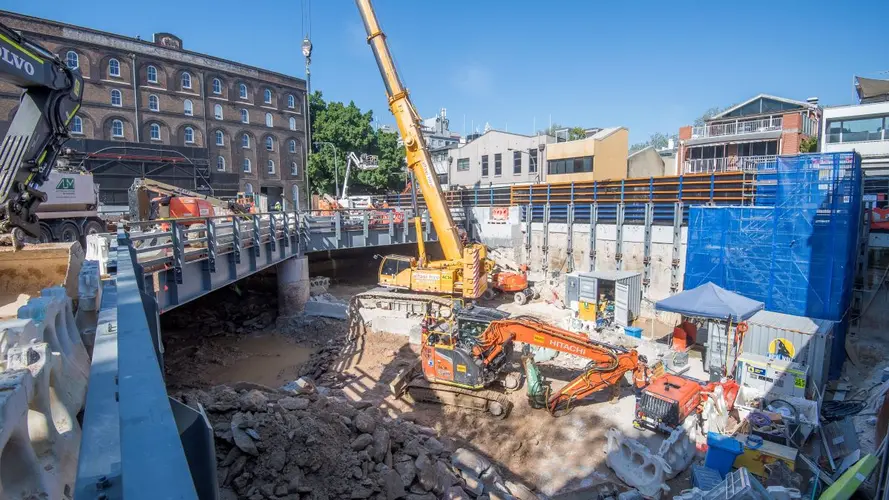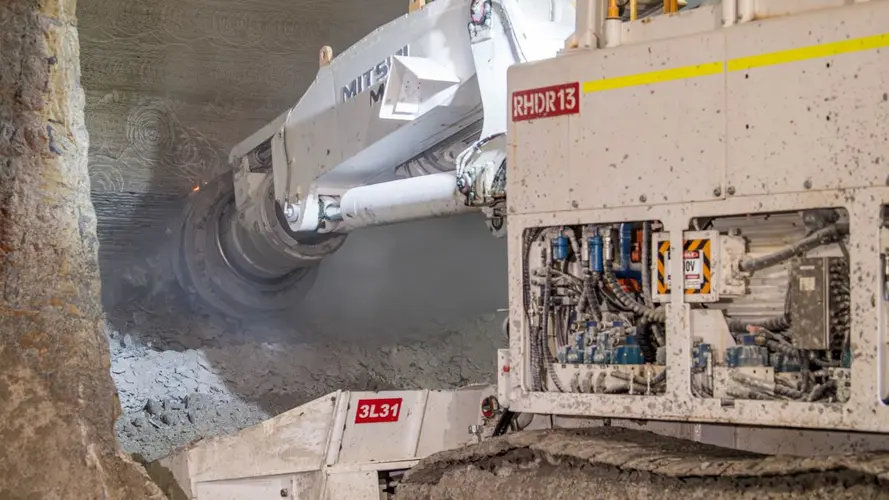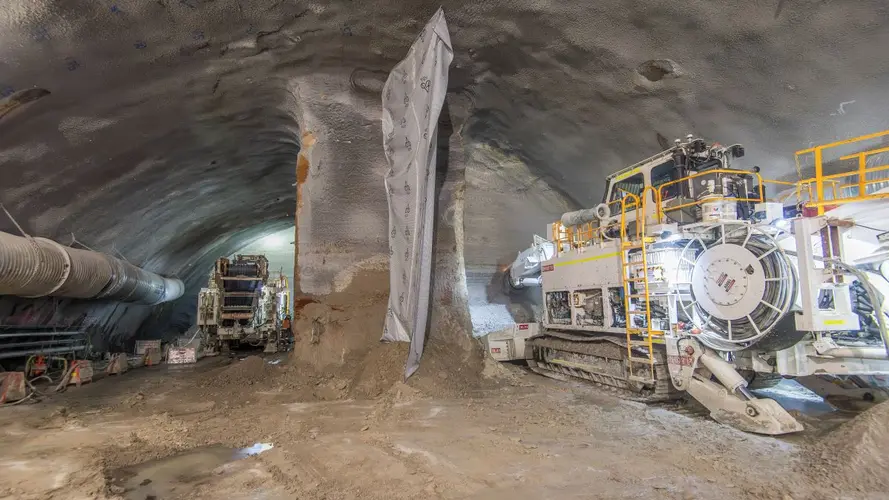Roadheaders dig in to carve out new Pyrmont Metro Station
01.11.2024



Excavation work has begun for the new Pyrmont Metro Station as part of the transformative Sydney Metro West project.
Two roadheaders are currently working at the station’s eastern end, with a third expected to arrive later this month. These 117-tonne machines have already carved more than 90 metres into the future station cavern, which will eventually measure 18 metres high, 24 metres wide and 170 metres long.
The roadheaders are expected to complete the station cavern by early 2025, paving the way for tunnel boring machines Jessie and Ruby as they build the 2.3-kilometre tunnels linking The Bays to Hunter Street in the Sydney CBD.
In total, the roadheaders will remove 151,000 tonnes of material from the site, with around 25,000 tonnes already excavated. All clean material from the excavation will be repurposed for ongoing projects across Sydney.
Additionally, two station shafts are being excavated by rock hammers, to serve as pedestrian access points. The eastern shaft will reach a depth of 40 metres and the western shaft, 33 metres.
The new Pyrmont Station, with entrances on Pyrmont Bridge Road and Union Street, will provide unparalleled access to Darling Harbour, Blackwattle Bay, and the new Sydney Fish Market. A rapid metro connection will offer a two-minute ride to Hunter Street in the CBD and a 13-minute trip to Sydney Olympic Park.
Above the station’s eastern end on Union Street, a proposed 31-story development is under review by the Department of Planning, Housing and Infrastructure (DPHI). This mixed-use building will feature commercial, retail and residential spaces, creating a vibrant precinct for living, shopping and working.
Sydney Metro’s delivery partner, the John Holland CPB Contractors Ghella Joint Venture (JCG JV), is managing the excavation of the Pyrmont Metro Station cavern. The project marks an exciting milestone for Sydney Metro West which, once completed, will transport 20,500 passengers into Sydney’s CBD each hour during the morning peak by 2036, reshaping transit and accessibility in the city.